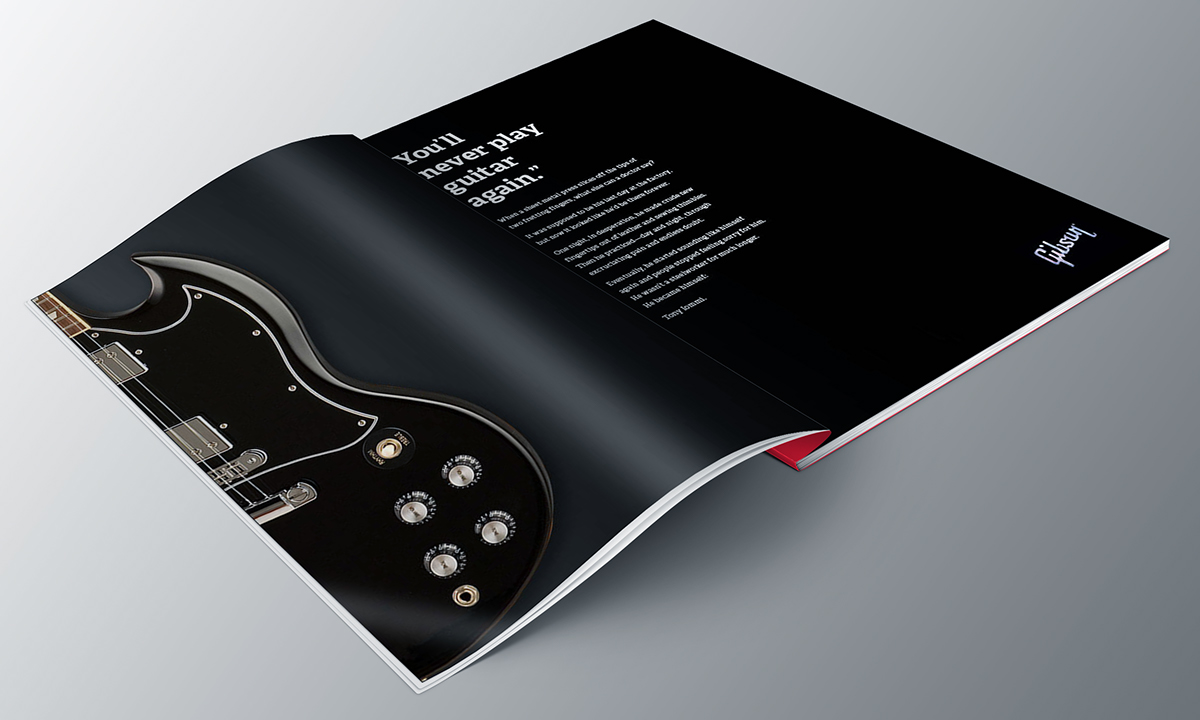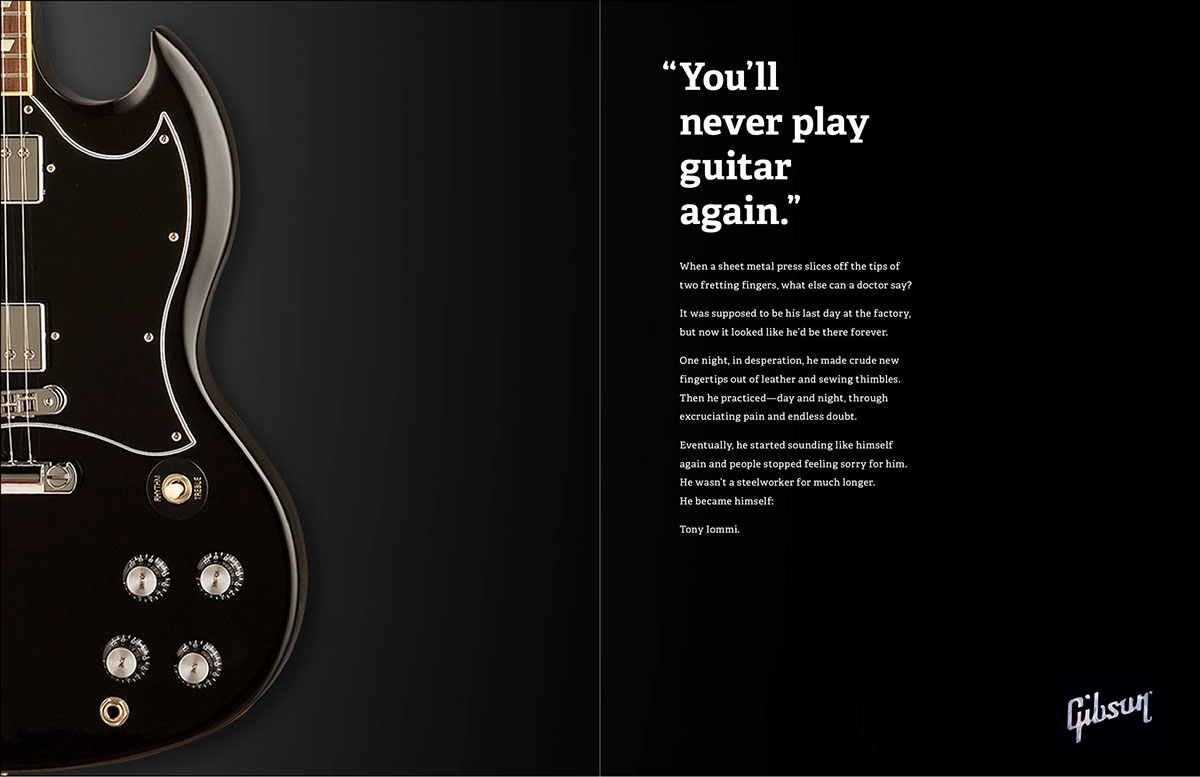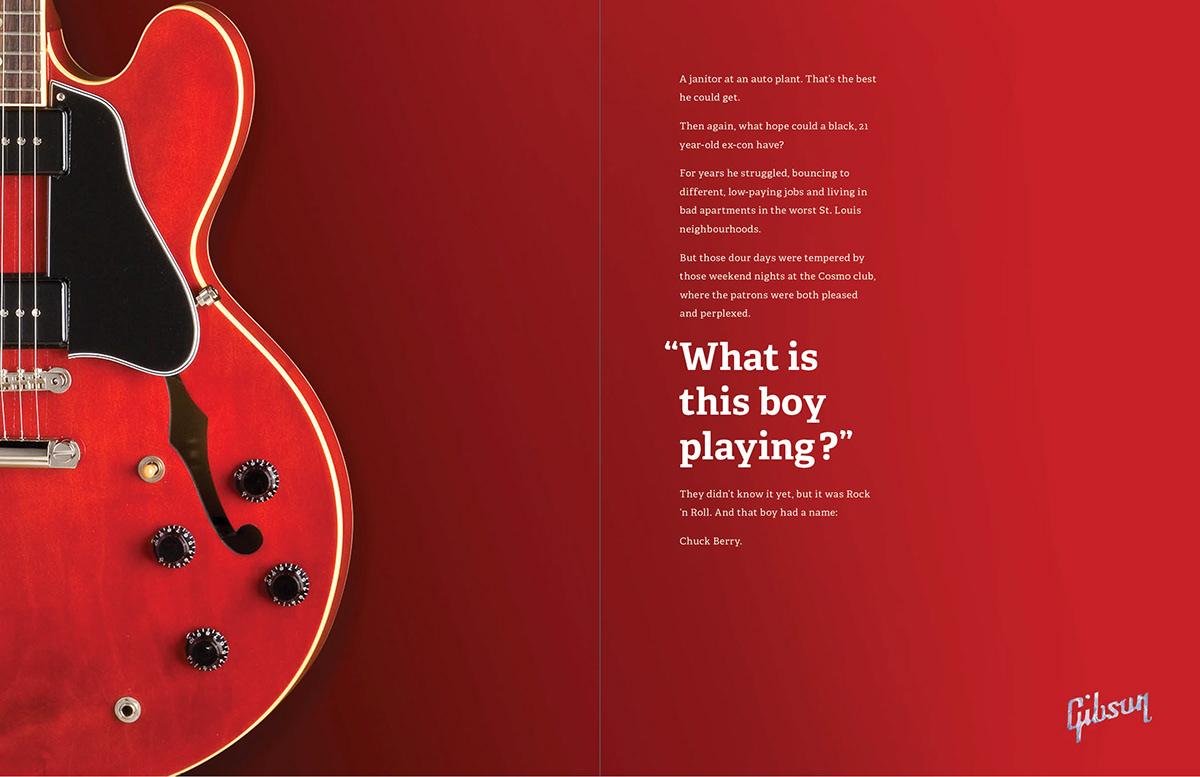The legend of Gibson Guitars has been built by Rock 'n Roll's most iconic players.

“You’ll never play guitar again.”
When a sheet metal press slices off the tips of two fretting fingers, what else can a doctor say?
It was to be his last day at the factory, but now it looked like he’d be there forever.
It was to be his last day at the factory, but now it looked like he’d be there forever.
One night, in desperation, he made crude new fingertips out of leather and sewing thimbles. Then he practiced—day and night, through excruciating pain and endless doubt.
Eventually, he started sounding like himself again and people stopped feeling sorry for him. He wasn’t a steelworker for much longer.
He became himself:
Tony Iommi.

A janitor at an auto plant. That’s the best he could get.
Then again, what hope could a black, 21 year-old ex-con have?
For years he struggled, bouncing to different, low-paying jobs and living in bad apartments in the worst St. Louis neighbourhoods.
But those dour days were tempered by those weekend nights at the Cosmo club, where the patrons were both pleased and perplexed.
“What is this boy playing?”
They didn’t know it yet, but it was Rock ‘n Roll. And that boy had a name:
Chuck Berry.

“A failure.”
Everyone around him called him that. Could you blame them? A drop-out, he was barely 15 years old and working night shifts at a butcher shop.
Not surprisingly, he was fired. And with his last few dollars, he didn’t buy a smart suit and look for a real job, as his family had hoped. Instead, he took that money to the local music shop.
Not long after that, people stopped calling him “failure”. They called him by his name:
Angus Young.

